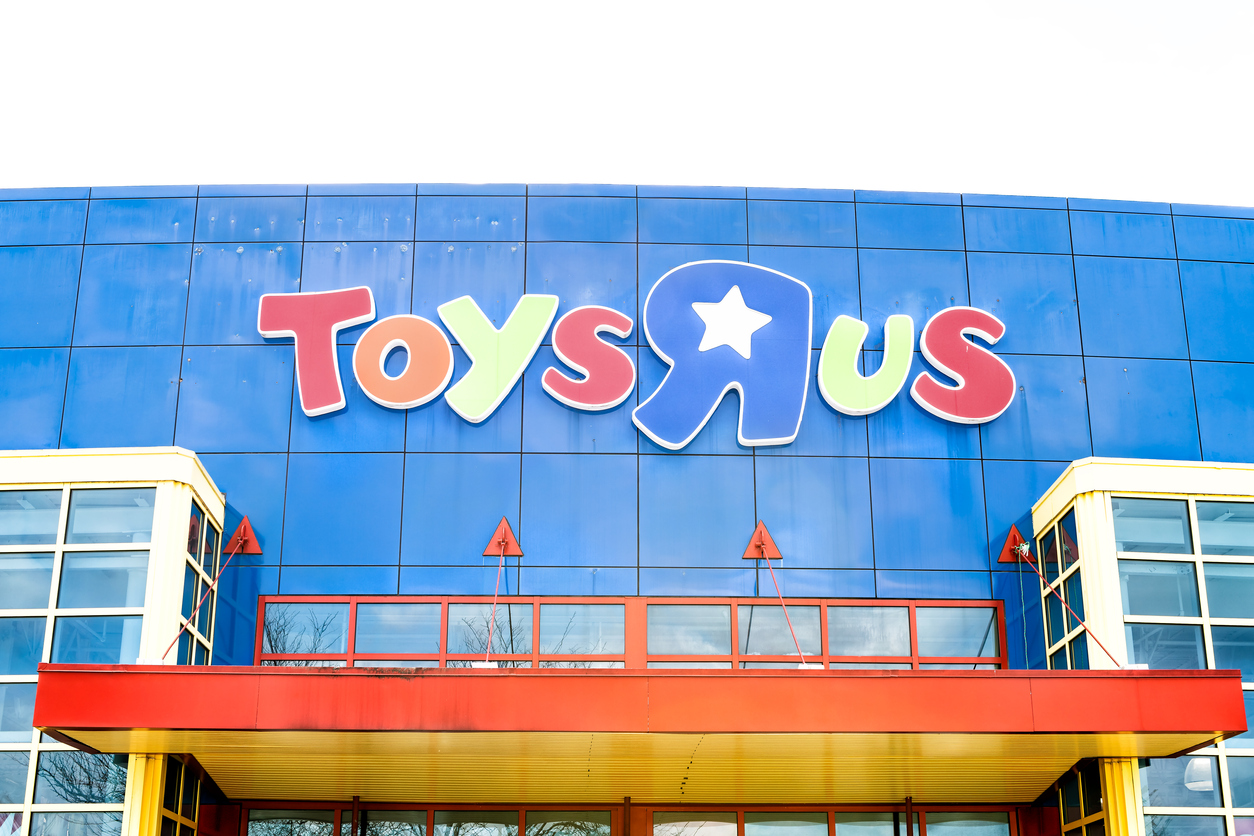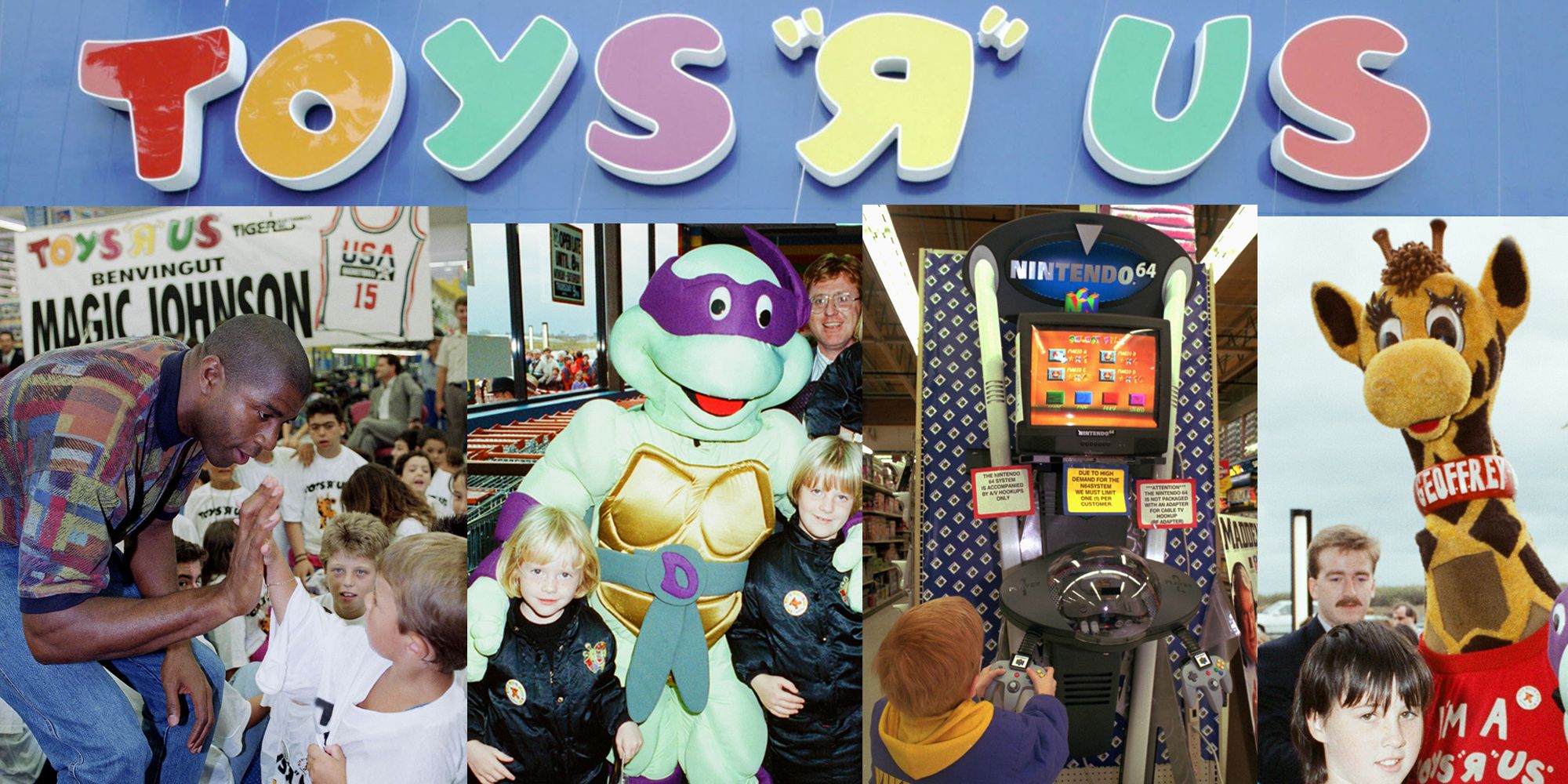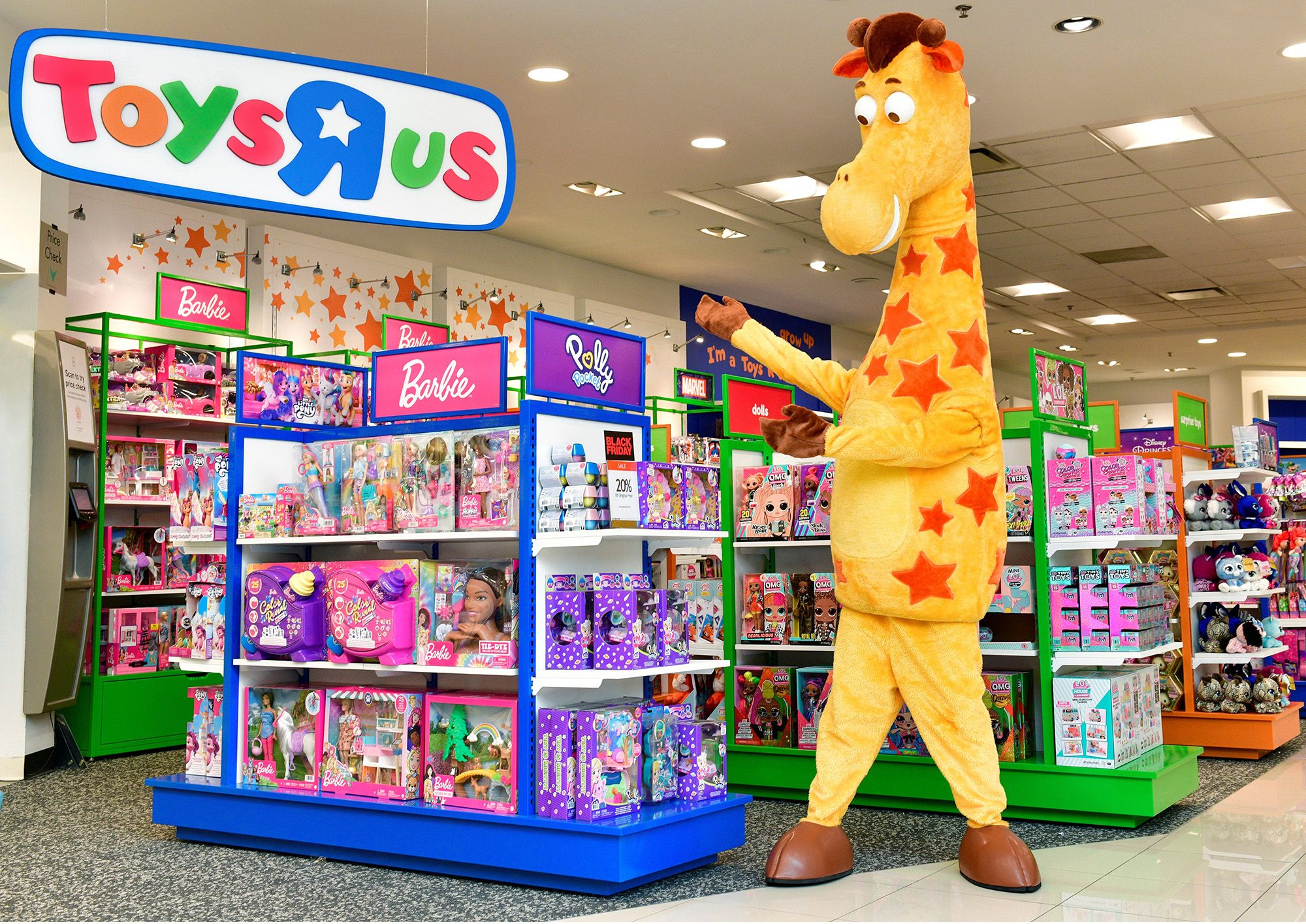
Delving into the Toys R Us history provides a fascinating look at how this beloved toy store chain rose to prominence, only to face decline and eventually work towards revival. In this comprehensive blog post, we will explore the origins of Toys R Us, from Charles Lazarus’ first store to its transformation into Children’s Super Mart.
We’ll then discuss the company’s expansion and innovations that solidified its position in the toy market, including the opening of their first official store in Rockville, Maryland and their push for video game sales. Additionally, we will examine spin-off brands such as Kids R Us and Babies R Us which further diversified their offerings.
Continuing with the analysis of the retailer, we’ll examine Toys R Us’ online presence and flagship stores during their peak years. However, no story is complete without examining challenges faced – we shall delve into the factors contributing to their decline and eventual bankruptcy.
Finally, our exploration of Toys R Us history would not be complete without discussing its international impact on markets like Australia and Europe before concluding with recent efforts made towards reviving this iconic brand under TRU Kids along with future plans for potential expansions.
The Humble Beginnings of Toys R Us

Discover how Toys R Us started with Charles Lazarus’ first store in 1948 called Children’s Bargain Town in Washington, D.C., and evolved into a toy empire.
Charles Lazarus’ First Store
Inspired by the baby boom after World War II, Charles Lazarus began by selling baby furniture from his father’s bicycle shop in Washington, D.C. Starting from $5,000, he continued making sales and opened Children’s Bargain Town, a small shop selling furniture for babies and toddlers in 1948. His original idea was to target the needs of the post-war baby boom families. This initial idea performed well and allowed his company to thrive for the following decade.
From Furniture to Toys
Customers who frequented Lazarus’ shop began asking for toy products for their growing children. Giving in to consumer demand, he began stocking toys and renamed his store to Baby Furniture and Toy Supermarket. He used a backwards ‘R’ to make the name stand out more.
After a customer returned and asked to rebuy another toy that their child had broken, Lazarus had an epiphany; toys had a higher turnover rate and would sell in larger quantities as opposed to furniture. Once a high-quality piece of furniture was bought, it would last for years. Whereas toys would be replaced much more easily, or accumulated in larger amounts. Realizing this, he rebranded his store to Children’s Supermarket in 1957. As his business became more successful, it was acquired by Interstate Department Stores, Inc. in 1966.
Expansion and Innovations
In the 1970s, Toys R Us history experienced significant growth by going public, expanding its store count, and introducing innovative concepts to the retail industry. One of the primary reasons behind its nearly $2 billion dollar annual sales by 1985 was the fact that the sheer diversity of toys multiplied. Not only that, but restocking new product frequently meant bigger discounts on bulk orders, which meant lower prices to consumers.
Charles Lazarus was also one the first to use predictive retail analytics far ahead of its time. By installing computers in every store, he would receive sales data from each cash register at every store to track daily sales. He had the most advanced computing system in the world of retail and used this data to make informed purchase decisions. One prime example of this is how he almost never sold Cabbage Patch kids because he figured they looked ugly. However, as sales for the toy began to rise, he followed the data and stocked more just as it became a cultural phenomenon.
Finally, Lazarus made employee stock options available as a performance incentive and this increased employee loyalty tenfold. Plenty of executives and managers performed well enough to earn these stock options that hadn’t been used in some time, and many of them stayed loyal to the company for their entire professional careers. This definitely makes Toys R Us sound like one the companies with the highest employee retention of its era.
Furthermore, the 1980s saw a huge boost in cultural brand recognition thanks to:
- Dr. G. Raff mascot & iconic rainbow stripes design: In 1983, the company launched its memorable mascot Dr. G. Raff and an eye-catching rainbow-striped logo that became synonymous with fun-filled shopping experiences for children.
- Video game sales: Toys R Us capitalized on the video game trend during the 1980s by dedicating large sections of their stores to video game sales, solidifying their position as a leading toy retailer.
Spin-off Brands – Kids R Us & Babies R Us
Toys R Us expanded its reach by creating spin-off brands like Kids ‘R’ us for children’s clothing and Babies ‘R’ us, targeting the baby products market.
- Kids ‘R’ us: Launched in 1983, this brand offered fashionable apparel for kids at affordable prices, becoming a popular choice among parents.
- Babies ‘R’ us: Toys R Us acquired Baby Superstore Incorporated and rebranded it as Babies ‘R’ Us, offering everything from diapers to strollers under one roof.
Toys R Us History: Online Presence & Flagship Store

In the late 90s, Toys R Us recognized the importance of having an online presence and launched toysrus.com in 1998, allowing them to reach a wider audience and stay competitive in the growing e-commerce market.
The launch of toysrus.com marked a significant milestone for the company as it expanded its retail operations into the digital world.
In addition to their digital expansion, Toys R Us also opened its iconic flagship store in Times Square in 2000, featuring multiple floors of toys, games, and even a Ferris wheel inside.
might not have ever been one of the top 10 largest retailers in the industry, but
This impressive Times Square location became synonymous with fun-filled shopping experiences for children and adults alike until its closure in December 2015.
The Decline & Bankruptcy of Toys R Us

Mounting obligations and rivalry from digital vendors led to the failure of Toys R Us. Sadly, it joined the growing list of retail stores going out of business and closing.
Closing all Kids ‘R’ Us Stores by 2003
Toys R Us closed all its Kids ‘R’ Us stores in an effort to focus on their core business, but it wasn’t enough to save them from financial struggles.
Restructuring $5 billion worth debt
In September 2017, Toys R Us filed for bankruptcy protection due to their massive $5 billion debt load, leading to the closure of hundreds of stores across the United States as they tried to restructure and stay afloat.
Despite their restructuring efforts, Toys R Us was unable to remain competitive in the ever-changing retail market and eventually shuttered all of its stores.
International Impact
The closure of Toys R Us in the United States had a significant global impact, leading to rebranding or shutting down stores outside the US. Toys R Us history also changed the landscape of the retail and cultural worlds.
In some countries, such as Australia, all 44 locations were closed.
Smiths Rebranding Toys ‘R’ Us Stores
In South Africa, toy retailer Smiths Toys took over and rebranded several former Toys ‘R’ Us locations.
This ensured that these stores would continue to serve customers under a new name.
Australia Closing All 44 Locations
Australia saw the closure of all its 44 Toys R Us locations.
This left many employees without jobs and customers without their beloved toy store.
Despite these closures, Asia continues to have a strong presence with over 470 operational Toys R Us locations across various countries.
Revival & Future Plans For Toys R Us

Toys R Us history is not over, and the brand is back and better than ever, thanks to TRU Kids, a company founded by former executives and lenders. This signals a Toys R Us comeback that might prove to be the final chance for the brand.
Their goal is to create immersive experiences for customers while staying true to the beloved toy retailer’s roots.
Reopening as TRU Kids
Two scaled-down outlets have been established already, with further locations in the pipeline.
WHP Global also acquired a controlling interest in TRU Kids Brands, further solidifying their commitment to rebuilding Toys R Us.
Trademark filings for Toys R Us Land, Park & World
Exciting ventures like theme parks could be on the horizon, with trademark filings for names such as “Toys R Us Land,” “Toys R Us Park,” and “Toys R Us World.”
It’s clear that there are big plans ahead for this cherished brand and a possible Toys R Us comeback.
4 Highlights of Toys R Us History

The Backstory of Toys R Us History
Toys R Us history begins with Charles Lazarus who founded the business in 1948 as Children’s Bargain Town, later becoming Children’s Super Mart, and finally opening its first official Toys R Us store in Rockville, Maryland in 1957, with iconic elements like Dr. G. Raff mascot and rainbow stripes design.
The Decline of Toys R Us
Toys R Us failed due to increased competition from online retailers, heavy debt burden from restructuring efforts, inability to adapt quickly to changing consumer preferences, and mismanagement of their e-commerce presence.
Why Toys R Us Became Popular
Toys R Us gained popularity due to its vast selection of toys at competitive prices, innovative marketing strategies like Geoffrey the Giraffe mascot, exclusive partnerships with toy manufacturers for limited edition products, and focus on creating a fun shopping experience for children.
An Interesting Fact About Toys R Us History
Toys R Us once held a significant share in the video game market during the late 1980s-1990s through their dedicated video game sections called “R-Zone” which featured major gaming consoles and games.
For more information on the history of Toys R Us, check out this source.
Toys R Us History Conclusion
Despite facing bankruptcy and store closures worldwide, TRU Kids has revived the brand with new trademark filings such as Toys R Us Land, Park & World, proving that even iconic brands must adapt to survive. Toys ‘R’ Us currently exists inside select Macy’s Department stores, but that’s not enough to capture the grandeur and charm of the original and larger locations. And after the decline of Toys ‘R’ Us, it might make you wonder, “do we need toy stores anymore?”
